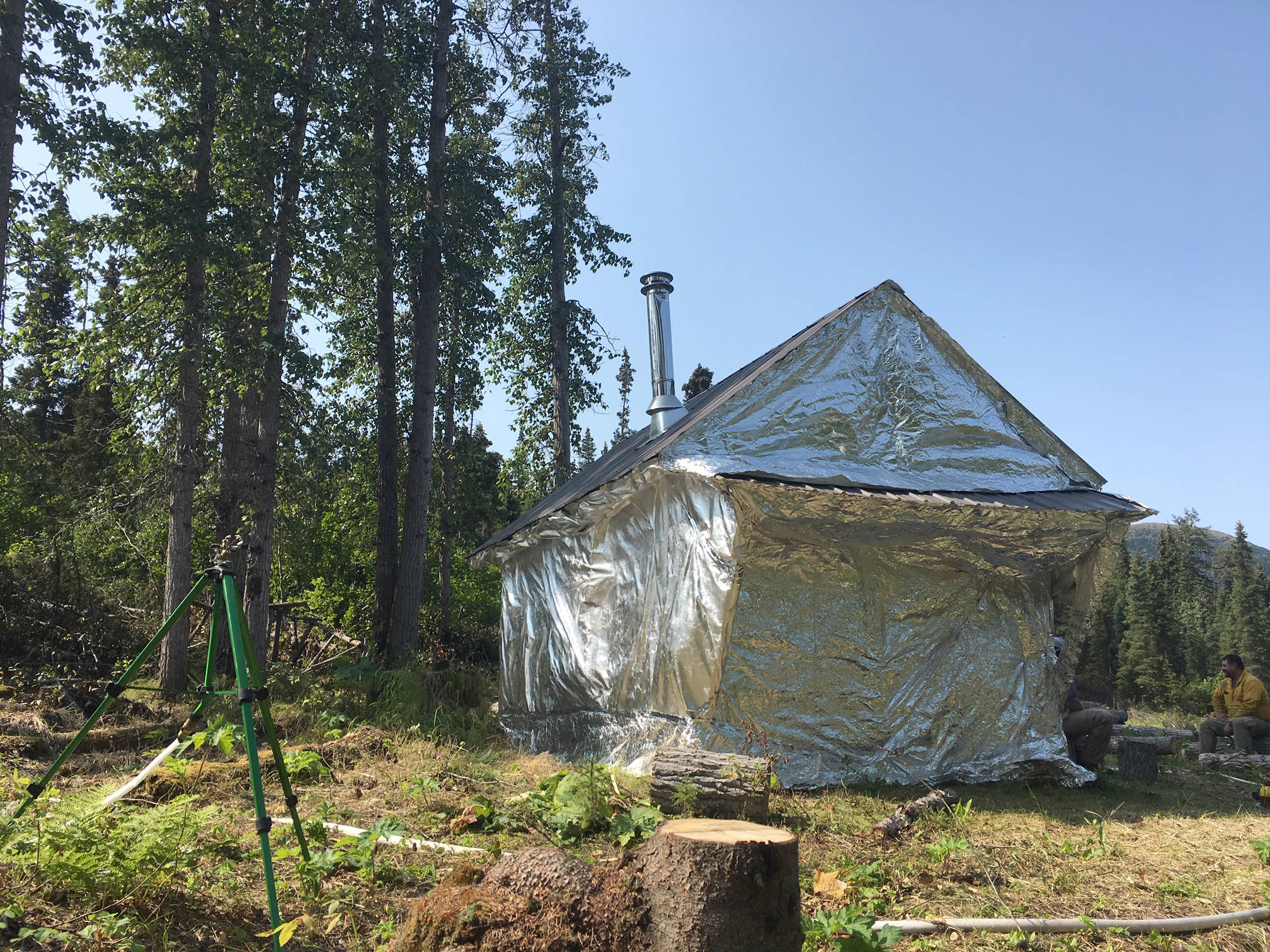As a relatively new parent, my appreciation of the proverb that begins with, “It takes a village,” seems to grow with each passing day. This summer I saw firsthand that in addition to raising children, it also takes a village to protect communities, lives, homes and infrastructure, including the refuge’s well-loved public use cabins, from wildfire.
Throughout the summer, refuge staff, community members and firefighting crews from across the country worked together to protect the Kenai Peninsula. All told, more than 3,000 people were at one time assigned to the Swan Lake Fire. Post-fire rehabilitation work will probably be ongoing for years.
The Kenai National Wildlife Refuge manages and maintains 25 cabins, which include both historic and contemporary structures. Of these, seven were threatened by the Swan Lake Fire.
When the fire first started burning in early June, Trapper Joe, Big Indian Creek and the Harry Johnson Trapline cabins were close enough to receive treatments that ranged from tree thinning and sprinklers to a foil wrap that, while offering protection from flying embers, transforms a cabin into looking like a giant baked potato.
These three structures are historic and two are open to the public: Trapper Joe is first-come, first-served and Big Indian is reservable. Harry Johnson, which is listed on the National Register of Historic Places, is a hard-to-reach administrative cabin that is not available to rent.
As the long, unseasonably dry days of late summer wore on, particularly high winds one weekend in August increased fire activity and intensity. This big wind event pushed the fire to the south, across the Sterling Highway and into the Skilak Recreation Area. We had to close the Kelly Lake, Engineer Lake, Upper Ohmer Lake and Doroshin Bay cabins to allow firefighters to work on structure protection.
Once it was evident that fire was close to reaching the cabins, fire managers called for water and retardant drops, as the fire burned much closer to these cabins than those on the north side of the Sterling Highway.
Over the course of the entire fire and within the entire perimeter, more than 5 million gallons of water and 115,000 gallons of retardant was used. The fire burned right up to and around the Kelly Lake and Engineer Lake cabins but, in the end, not one cabin or outbuilding was lost.
After being closed for much of the summer, Doroshin Bay and Upper Ohmer cabins reopened in late September. Kelly Lake and Engineer cabins will reopen later this week. Big Indian and Trapper Joe cabins remain closed until after the refuge opens up to snowmachines later this winter.
As you return to these cabins, please be on the lookout for ash pits that may still be hot and hazard trees that have had their roots exposed or weakened. I’ll be hiking the trails into the cabins often and clearing any downed trees I come across, but each windy day seems to bring more downfall.
On a positive note, cabin renters will have no trouble finding dead and down trees for the woodstove. Each cabin is equipped with a bow saw and splitting maul to help you stock up. This winter, refuge staff will also continue to thin trees and complete other Firewise tasks around cabins that were not in the burn area so they’ll be better protected against future fires.
It was undoubtedly a long and stressful summer here on the Kenai Peninsula, but hope springs eternal. I’m hoping we get a whole lot of snow this winter to blanket the landscape so we can access some of the backcountry cabins on snowmachines. Reservations for these and other reservable Kenai refuge cabins can be made at www.recreation.gov.
As we inch ever closer to the holidays, what better time to look back and reflect on what we have, what we have lost, and what might have been lost?
I’ve always considered our nation’s public use cabins to be oases in our urbanizing lives. Today, on the Kenai Peninsula, that’s more evident than ever before. In addition to places of quiet respite, the cabins within the fire perimeter are now verdant patches in an otherwise blackened landscape.
To be certain, these areas are going to look quite different for a long time to come, but as I stand on the porch of one of these cabins, my eyes still feast upon an incredibly beautiful landscape. For that, I am truly thankful.
Daniel Saxton is the cabin manager at Kenai National Wildlife Refuge. Find more Refuge Notebook articles (1999–present) at https://www.fws.gov/refuge/Kenai/community/refuge_notebook.html.

